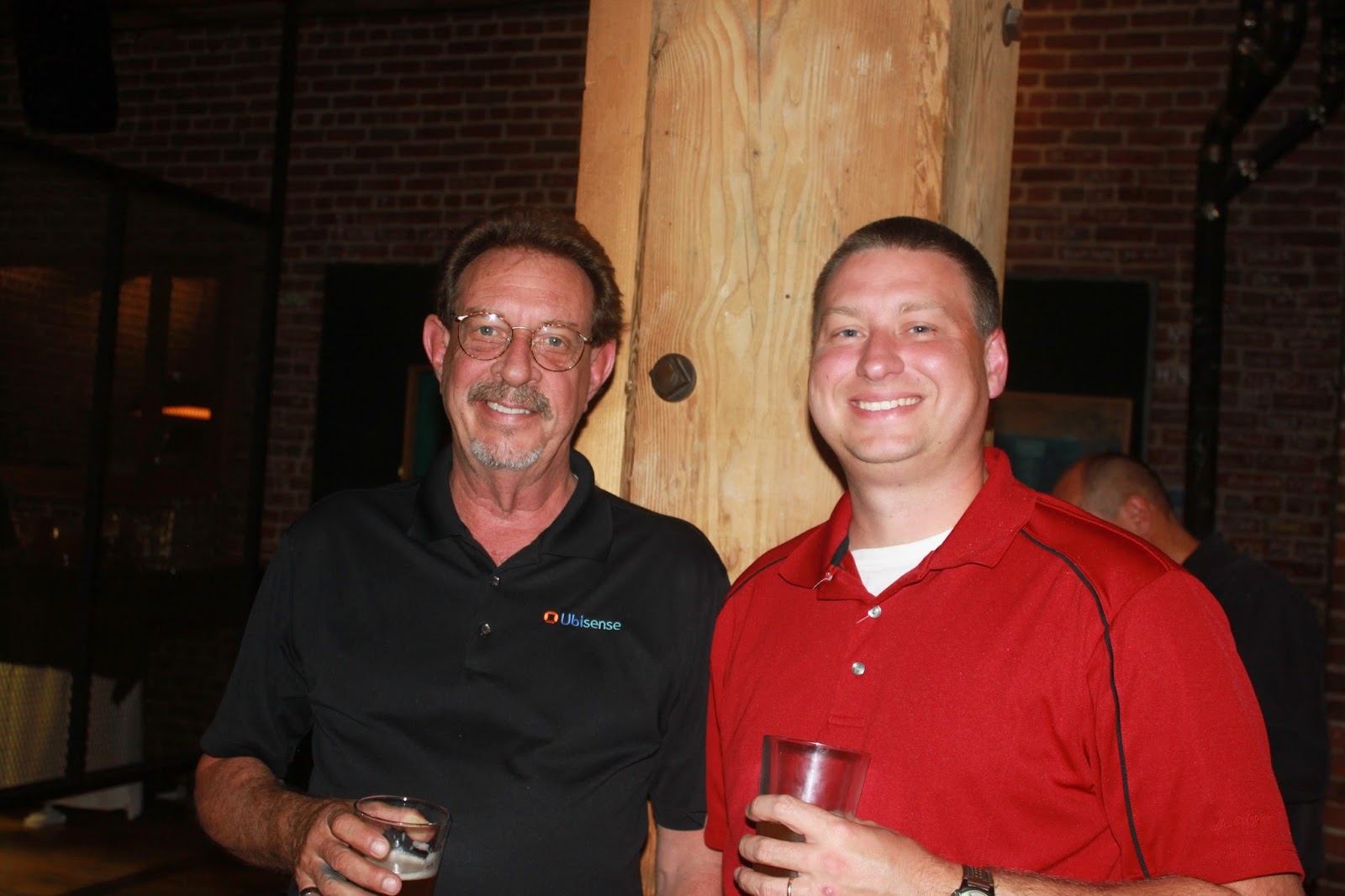By Adrian Jennings
Published in MassTransit Magazine
Feb 9, 2012
Technology infrastructure in a transit yard may not be at the top of most people’s minds, but there are some simple indicators that suggest when it’s time to be worried.
Indoor location systems are becoming widely adopted to solve all of the problems with a single solution. These location systems use sensors and tags to keep track of vehicles indoors just like GPS satellites and tags keep track of them outdoors. By knowing the precise location of vehicles and integrating this with information from maintenance, dispatch, scheduling and vehicle equipment databases, operators are gaining new visibility into their operations and control over their fleet of vehicles.
Yard Visibility
Does “yard visibility” mean referring to a handwritten markup sheet generated by a manual yard audit? Then it’s time to be worried about your technology infrastructure.
Markup sheets provide a simple visual reference for understanding where vehicles are located, but suffer from two key limitations: in any manual, repetitive process like a yard audit, mistakes can be made, and given the constant movement of vehicles, the information from any given yard audit is quickly out of date.
An indoor location system can completely replace manual audits and markup sheets with an automatic, real-time vehicle location system. As mentioned, such a system operates much like GPS, with tags on vehicles being tracked not by satellites (which cannot see indoors) but by sensors mounted in the ceiling of the yard. This network of sensors updates the location of vehicles several times a minute with an accuracy of just a few feet. The result is an electronic markup sheet that shows the exact location and identity of all vehicles in the yard and updates that information constantly.
This is the core value of an indoor location system, and it was this that led Metro Transit in Minneapolis to be among the first to adopt such a system. The yard audit task typically took between 30 and 60 minutes, and with buses constantly in motion the data required constant updating. Audits were performed on an almost hourly basis, and were often out-of-date before a single round of the facility was complete. The inefficiencies of this process were clear to Metro Transit at different levels: in the time taken to collect the data; in the effects of inaccurate bus location data such as poor on-time departures due to blocked buses; and in the time wasted by maintenance staff searching for vehicles.
In order to realize the full potential of its location system, Metro Transit was quick to realize that having bus location information in electronic form created an opportunity to bring together multiple software systems.
Software Application Integration
Does software application integration mean running different applications on different computers and manually entering information from one system into the other? Then it’s time to be worried about your technology infrastructure.
Once the markup sheet is in electronic form, a huge amount of added value can be incorporated into the yard map view. The first software integration point is to connect the electronic map with the vehicle equipment database so that a simple mouse-click on any vehicle icon reveals a wealth of information: bus length, diesel or hybrid, wheelchair accessible, etc. Some of these attributes can also be indicated visually using different icons and colors making the markup sheet a rich source of useful information-at-a-glance. Need the next available hybrid ready to be dispatched? Electronic surveillance contractor needs a map of all buses with DVRs? That information can reliably be available all the time.
Metro Transit went one step beyond this and also integrated information from the dispatch and maintenance systems. This allowed the map display to show vehicle attributes and also route assignments and maintenance status. For maintenance, the bus icon would change to show a minor or critical fault so that a dispatcher had immediate feedback if a vehicle was not ready to be assigned.
Coordinated Operations
Does “coordinated operations” mean picking up the phone or leaving a note to pass critical information between departments? Then it’s time to be worried about your technology infrastructure.
When the Réseau de transport de Longueuil (RTL) public transportation service in Longueuil, Quebec, adopted an indoor location system, the technology had become more than a yard information tool: it was now a yard automation tool. With a rich set of integrated data deeply linked to bus location, RTL was able to streamline many operations simultaneously improving quality of service and efficiency.
At RTL, the electronic map display can not only be used to provide data about vehicles, but also to perform operations like assigning buses to routes, assigning drivers to buses, etc. To assign a bus to a route, a dispatcher simply has to drag-and-drop a bus icon onto one of the routes displayed in a list. Any bus showing a critical fault will immediately be rejected to prevent safety issues. When a driver arrives at the start of a shift he approaches an electronic kiosk where he swipes his smart card to be given his route and bus assignment, along with a map showing where the bus is located. Digital displays throughout the yard help direct him to the bus to expedite pullout.
This is a typical example of how operations can be coordinated once all information is integrated into one place along with the exact location of the vehicle. These operations can be as diverse as dispatch, maintenance, revenue drop, cleaning, fueling, etc. As more information is integrated into a single application, more decision making can be automated.
Intuitive User Interface
Does “Intuitive GUI” remind you more of the life forms evolving in your fridge than the user interfaces for your current computer applications? Then it’s time to be worried about your technology infrastructure.
Most people today have become rather adept at using graphical user interfaces (GUIs), and a well-thought-out GUI can make your computer experiences much simpler.
A well-designed indoor location system has just such an interface: displaying vehicle location and identification over a map of the facility or facilities. As mentioned previously, the icons that represent vehicles are often color-coded or overlaid with other symbology to indicate critical information just by looking at the map. Maintenance status, vehicle type and home-garage for multi-garage operations are all typical examples of information that are displayed graphically.
Today, indoor location systems are replacing manual markup sheets with reliable, up-to-date electronic maps showing all vehicles across one or many facilities. By integrating this information with other data sources, indoor location systems are streamlining and error-proofing dispatch and pullout, improving maintenance efficiency and optimizing parking to avoid time wasted due to blockage. But what of the future?
A Better Way
When you are surrounded by paperwork, trying to use computer applications that frustrate more than they help, the best way to know what’s going on is to get up and walk the yard. Do you think that there must be a better way to manage a yard? Then it’s time to get excited about your technology infrastructure.
Indoor location systems are transforming yard operations first by providing yard information, then yard automation. But how far can that go? A few “day in the life” vignettes can help illustrate where indoor location systems can take yard management.
The driver arrives at the yard at the start of his shift and approaches the electronic kiosk. When he swipes his smart card he not only clocks-in for his shift, but also receives his day’s driving assignment and a map to the bus he has been allocated. As he walks through the garage, digital signs help direct him to his assigned bus. When he reaches the bus he’s happy to see the one parked in front just pulling out: no blockage and no late-pullout today. On his inspection of the bus he notices a flat tire: this bus is going nowhere. He reports this using his mobile device — a few taps on the touchscreen and he is given his new bus assignment and a map of its location. This time there is no blockage and no flat tire, and he pulls out on time.
During the day he notices a vibration through the steering column and reports it on his touchscreen console. When he arrives at the yard at the end of the shift he is directed to the next available revenue drop, then given instructions and a map about where to park.
The dispatcher has already defined the route requirements when the day starts. Each route has been flagged with vehicle requirements: one route through the city center, for example, requires a hybrid bus with a particular vinyl wrap advertising an upcoming movie. When all of the route requirements are defined, the auto-dispatch module takes a few moments to allocate buses to routes based on the bus type and configuration, maintenance status and position in the yard.
During the pullout process one driver reports a flat tire, immediately activating the auto-dispatch module. The bus is flagged for maintenance pickup and the entire remaining dispatch plan is redone to ensure that the correct buses still pull out on time and onto the correct routes. Account is taken of the fact that the disabled bus is now blocking all buses in the row behind it, and all affected drivers get their revised bus assignments on their mobile devices.
At end of day, maintenance reports one bus has a critical fault causing a steering vibration and the estimated repair time is 22 hours. The auto-dispatch module updates the pullout plan, and the auto parking module adjusts its parking assignments for the rest of the buses to ensure minimum overnight shuffling.
The maintenance worker gets an alert on his mobile device that a bus has a flat tire and is directed to its location. The wheel can be changed on-site, and when complete he registers the fault as rectified and the auto-dispatch system reincorporates that vehicle into its plan.
Later that day he receives another alert directing him to the right location to pick up a bus with a steering column vibration. When he starts the bus he is notified that diesel pump #3 happened to be free and is directed to take the opportunity to fill the tank. When he arrives at the pump, the bus identity and type is automatically registered and the pump activated since the fuel type is a match. When full, the pump flags the bus as refueled and records the amount of diesel used into the bus’s record.
So, how far into the future is the vision of the smart yard? The building blocks are already in place and software applications are maturing rapidly. The fundamental foundation of location systems and data integration are already available, with the automation modules either already available or in development.
For the complete article, visit www.MassTransitmag.com/10614025. MT























































